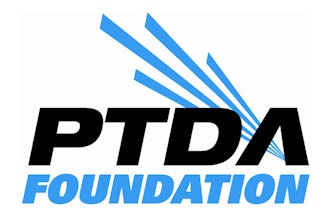
Businesses figured out how to work remotely on the fly when COVID-19 rapidly disrupted our way of working. Those planning to adopt a hybrid work model when they return to the office still have time to prepare. But managing a distributed team comes with its own unique challenges, like:
— What does hybrid look like for your company?
— How do you keep remote employees engaged?
— What apps and software do you need to create a seamless experience?
These are tough questions to answer and you’re unlikely to please everyone. But you get a chance to build a new office culture, and there’s something exciting about that.
“If I think about a transformational time for how people work — this is it,” says Megan Jarvis, vice president of talent at Lessonly, a software company headquartered in Indianapolis. “The door is open for companies to rethink how they work.”
1. GET EMPLOYEE BUY-IN EARLY
The biggest mistake you can make is rolling out a plan void of any employee input. Bring your team into the fold early, survey them to gauge their concerns and preferences, then enlist a select few to be part of a return-to-office committee.
Those employees will have skin in the game and will help get other employees on board when you announce your return-to-office plan, Jarvis says.
The feedback loop shouldn’t stop when the office doors reopen. Continue to touch base with employees through teamwide and one-on-one meetings so workers have a space to ask questions and surface concerns.
“Bring the team together so that you’re all on the same page and understand each other’s challenges,” says Danny Wright, chief operating officer of 1863 Ventures, a Washington, D.C.-based program that helps grow the businesses of new majority entrepreneurs — a term increasingly used to describe individuals who are members of historically marginalized and disinvested groups. “Continue to mold those relationships so that as the pandemic ebbs and flows, you’re on the same page and moving better together as a family.”
2. INVEST IN THE NECESSARY TOOLS
This can be as simple as moving from a desktop software to cloud-based tools so employees can collaborate in real time, no matter where they are.
It may also be more involved: Equipping office conference rooms with video conferencing equipment or switching your business accounting software to the cloud as well.
Whatever the tool, it should be easy to use, meet your business needs and fit within your budget, Wright says.
“There is no one-size-fits-all,” Wright says. “It comes down to understanding what your team needs and what your organization is doing.”
3. CREATE COMMUNITY ONLINE
Watercooler talk is an oft-cited benefit of being in the office. You gather informally, talk about your weekend or the show you’re watching, and in the process form bonds with your teammates. That can still happen online if you create space for it.
Lessonly uses Slack to help build community among a distributed workforce. It has a “Mama Llamas” channel for parents to connect, a Peloton channel where people share their favorite instructors and classes, a channel for book lovers and a channel for cat lovers.
It also has a designated channel for shoutouts — an online space to mimic the more casual in-person acknowledgment of work well done.
“When you’re in person, you just have more opportunities to see someone in the hallway and in the moment tell them, ‘Wow, great job,’” Jarvis says. “We were missing that.”
4. SET TANGIBLE METRICS
Promotion parity will be top of mind for your remote cohort — and for good reason. A 2014 hybrid work experiment by Stanford researchers found remote employees were about 50% less likely to be promoted compared with their in-office colleagues, despite the remote workers being more productive.
That is due, in part, to a butts-in-seats mentality where managers judge performance by the amount of time they physically see an employee toiling away. That won’t cut it in a hybrid workplace.
Instead, managers need to evaluate performance based on what an employee accomplishes. Setting objectives and key performance indicators can help managers more accurately assess someone’s contribution, Jarvis says.
“It’s about the output, regardless of how it’s getting done,” Jarvis says.
5. RETHINK OLD OFFICE HABITS
This applies to everything from hiring to onboarding to asking for input.
If you have a question or are stuck on a project, for example, you can stand up and look around the office for someone to help, or you can reach out to your team via a messaging tool like Slack, Microsoft Teams or Google Hangouts.
One option limits input to those in your immediate physical space. The other gives everyone an equal chance to participate.
With hiring, Lessonly opted to conduct all interviews remotely, even if a candidate was local, to avoid giving an advantage to candidates who interview in person. And all new hires go through the same virtual onboarding process using the company’s own product, an e-learning management platform.
“Ask yourself: ‘Is the person who is on-site at an advantage?’” Jarvis says. “If the answer is yes, what can you do through tech or other resources to balance that out?“
This article was provided to The Associated Press by the personal finance website NerdWallet.






















